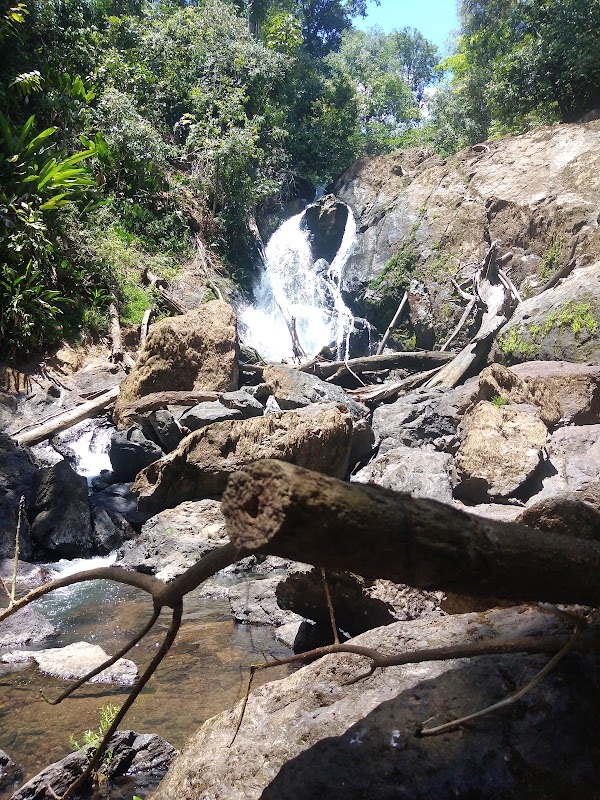Top Remote Rainforest Hiking Routes Near Puerto Jiménez: Exploring Lesser-Known Trails in Golfo Dulce
Explore Golfo Dulce’s lesser-known rainforest trails just outside Puerto Jiménez, where remote routes offer pristine encounters with wildlife and sweeping views, away from the crowds. This guide balances adventure with practical tips to prepare you for the wild heart of Costa Rica’s southern rainforest.
Start Early to Beat Heat and Showsers
Tropical rains often arrive by mid-afternoon. Begin your hike before sunrise to maximize dry, cooler hours and avoid slippery trails.
Pack Lightweight Rain Protection
Rain jackets or ponchos are essential as weather shifts quickly; breathable materials help avoid overheating during climbs.
Hydrate Consistently
Carry at least 2 liters of water per person. The humid environment speeds dehydration despite mild temperatures.
Wear Trail-Ready Footwear
Choose waterproof boots with solid grip and ankle support for muddy, uneven terrain to prevent slips and ankle injuries.
Top Remote Rainforest Hiking Routes Near Puerto Jiménez: Exploring Lesser-Known Trails in Golfo Dulce
Puerto Jiménez, perched on the edge of Golfo Dulce, offers more than just a gateway to popular hotspots—it’s your portal into some of the most secluded rainforest trails Costa Rica has to offer. These tracks, less trodden and fiercely wild, invite hikers of all stripes to engage directly with a living, breathing ecosystem where every footfall echoes against ancient trees.
Start with the Lapa Verde Trail, a 7-kilometer stretch that rises gradually through thick fern beds and towering ceibas, climbing about 350 meters in elevation. The path tests your endurance without overwhelming with steep ascents. Birdcalls—toucans, motmots, and the occasional howler monkey—sound like a personal soundtrack, while the river below dares you to pause and listen to its relentless flow.
Further inland, the Piedra Blanca Route sets a 12-kilometer challenge with looser gravel and occasional muddy patches that trace the contours of the ridgeline. Expect a total gain of 450 meters, rewarded by sweeping views of the Golfo Dulce basin. This trail demands careful footing and steady pacing but offers quiet spots where the rainforest breathes around you, mist and shadows weaving through the canopy.
For a shorter but rugged encounter, choose the Río Claro Loop. At 4.5 kilometers and a 200-meter ascent, it snakes alongside the rio’s twisting currents that push and pull, under fallen logs and over slippery stones. It’s a terrain puzzle that rewards focus and a sense of adventure.
Practical advice: start hikes early to avoid afternoon rains and midday heat. Wear sturdy waterproof boots with firm ankle support—terrain ranges from slick rocks to crumbly dirt—and carry at least two liters of water. Mosquito repellent is non-negotiable here. Don’t just pack snacks; think energy bars or dried fruit for quick boosts.
While navigating these paths at your own rhythm, respect the forest’s fierce self-will. The trails aren’t manicured escapes; roots grasp at unstable earth, and fallen branches script reminders of the untamed world around you. Your passage is a temporary alliance with this place, demanding attention and steady preparation.
Each route offers a unique engagement with Golfo Dulce’s rainforest heart—a dance of endurance and discovery. With minimal crowds and powerful, unfiltered contact with nature, this side of Puerto Jiménez welcomes those ready to listen to the jungle’s roar and move with its pulse. Whether a first-timer or a hardened trekker, you’ll find a trail here that pushes limits and broadens horizons.
Nearby Trips
All Adventures
Boat Charters
Water Activities
Adventures near Puerto Jiménez
Discover the unique and memorable adventures that make Puerto Jiménez special.
Frequently Asked Questions
Are these trails suitable for beginners?
While the terrain is uneven and sometimes slippery, all three routes offer options for moderately fit beginners who hike carefully and choose shorter loops. Guided hikes can improve safety and enjoyment.
Is it safe to hike alone in this area?
Solo hiking in these remote trails is possible but not recommended unless you have solid navigation skills and local knowledge due to dense rainforest and variable trail marking.
What wildlife might I encounter on these trails?
Expect to see toucans, howler monkeys, scarlet macaws, and potentially elusive creatures like ocelots or agoutis, particularly in early morning or late afternoon.
Do I need a guide to hike here?
Guides are not mandatory but highly advisable for safety, to enhance wildlife spotting, and to learn about local flora, fauna, and history.
Can I find potable water along the trails?
Natural water sources exist but should be purified before drinking. Carry sufficient water or treat water found on the trail with purification tablets or filters.
Are there any local conservation efforts hikers should respect?
Yes, many trails cross private reserves and protected lands. Stay on paths, avoid disturbing wildlife, and support local eco-tourism initiatives.
Recommended Gear
Waterproof hiking boots
Necessary for stable footing, ankle protection, and to handle mud and wet roots on rainforest trails.
Light rain jacket
Protects against sudden tropical downpours without overheating during climbs.
Hydration system or water bottles
Ensures you maintain hydration in high humidity and exertion.
Insect repellent with DEET
Essential for warding off mosquitoes and other biting insects common in rainforest environments.
Local Insights
Hidden Gems
- "A rarely visited viewpoint overlooking Golfo Dulce from the Piedra Blanca Trail offers panoramic sunsets with minimal crowd presence."
- "A moss-covered rock formation by Río Claro, locally called Piedra del Susurro, where the river’s murmur seems almost conversational."
Wildlife
- "Resplendent Quetzal sightings are rare but possible in upper elevations along Lapa Verde Trail early in the day."
- "Leafcutter ants crossing trails in large columns, a mesmerizing display of rainforest teamwork."
History
"These areas were historically inhabited by indigenous Boruca communities who traded along Golfo Dulce, making many natural features culturally significant landmarks."

